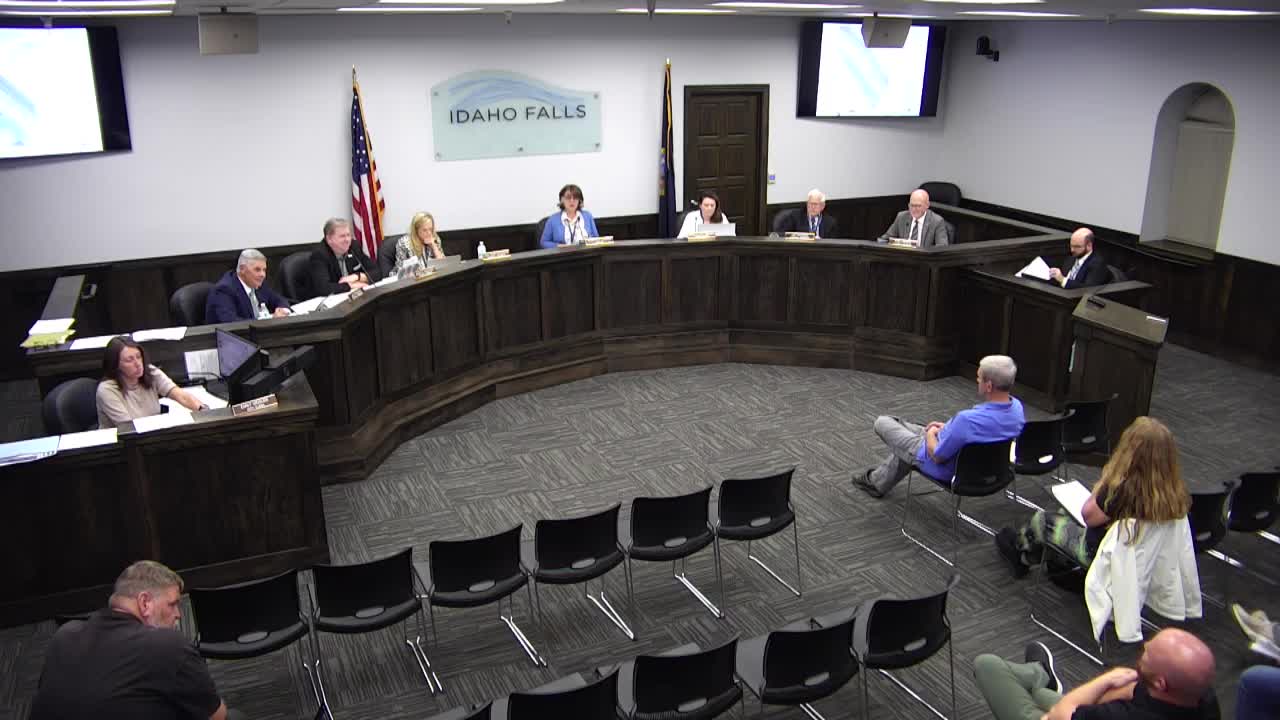Council tables ordinance to allow salvage yards in industrial zones after river-proximity, environmental questions
October 09, 2025 | Idaho Falls, Bonneville County, Idaho
This article was created by AI summarizing key points discussed. AI makes mistakes, so for full details and context, please refer to the video of the full meeting. Please report any errors so we can fix them. Report an error »

The Idaho Falls City Council Tuesday voted to table a proposed amendment to the city's zoning code that would permit salvage yards as a use in the I&M (intensive industrial) zone and add related site standards.
Why it matters: Staff said the ordinance is intended to let existing salvage businesses consider annexation without creating legal nonconforming uses and to set standards for screening, stacking height, processing surfaces and separation from sensitive areas. Planning commissioners had voted unanimously to forward the change to council.
Council concerns: Multiple councilors asked staff to provide additional analysis before the council adopts code changes. Concerns included the ordinance's proposed 750-foot separation from the Snake River, the treatment of canals and smaller waterways, how tire storage and other combustible materials would be regulated, and which parts of a yard must be on impermeable surfaces (the crushing/processing area vs. entire site). Several councilors asked staff to compare language used by other Idaho cities and to tie the draft wording to the city's river-overlay planning efforts.
Environmental oversight: Staff and the planning commission noted that many environmental protections for salvage yards are enforced by the Idaho Department of Environmental Quality (DEQ), and staff said they would look to DEQ standards as they finalize proposed local controls.
The vote: Council voted to table the ordinance to the next council meeting and asked staff to return with additional analysis including a map of industrial zones and suggested language to address waterways and processing-area impermeability.
Next steps: Staff will consult DEQ guidance, survey comparable municipal codes, map I&M zoning across the city and return with revised language and recommended distances or other controls for waterways and river-adjacent properties.
Why it matters: Staff said the ordinance is intended to let existing salvage businesses consider annexation without creating legal nonconforming uses and to set standards for screening, stacking height, processing surfaces and separation from sensitive areas. Planning commissioners had voted unanimously to forward the change to council.
Council concerns: Multiple councilors asked staff to provide additional analysis before the council adopts code changes. Concerns included the ordinance's proposed 750-foot separation from the Snake River, the treatment of canals and smaller waterways, how tire storage and other combustible materials would be regulated, and which parts of a yard must be on impermeable surfaces (the crushing/processing area vs. entire site). Several councilors asked staff to compare language used by other Idaho cities and to tie the draft wording to the city's river-overlay planning efforts.
Environmental oversight: Staff and the planning commission noted that many environmental protections for salvage yards are enforced by the Idaho Department of Environmental Quality (DEQ), and staff said they would look to DEQ standards as they finalize proposed local controls.
The vote: Council voted to table the ordinance to the next council meeting and asked staff to return with additional analysis including a map of industrial zones and suggested language to address waterways and processing-area impermeability.
Next steps: Staff will consult DEQ guidance, survey comparable municipal codes, map I&M zoning across the city and return with revised language and recommended distances or other controls for waterways and river-adjacent properties.
View full meeting
This article is based on a recent meeting—watch the full video and explore the complete transcript for deeper insights into the discussion.
View full meeting